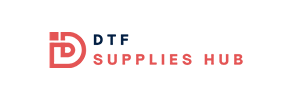DTF Gangsheet Builder is redefining how shops maximize throughput and maintain quality in direct-to-film printing. With DTF Gangsheet Builder, you can quickly arrange multiple designs into a single gangsheet, boosting printing efficiency and reducing setup time. This approach contrasts with manual sheet nests, where operators manually place designs and recheck margins, often increasing turnaround time. By optimizing space and automating alignment, the tool supports time-saving printing and helps achieve throughput improvements across batches. For teams handling recurring orders, adopting a DTF Gangsheet Builder can minimize waste and streamline production without compromising output quality.
Viewed through the lens of bulk-layout automation, the concept involves packing multiple transfer designs onto one sheet to maximize efficiency. Instead of manual nesting, think of an intelligent sheet-optimization workflow that handles spacing, bleeds, and alignment behind the scenes. This framing resonates with terms like DTF sheet nests, automated layout, and workflow efficiency, while keeping a focus on throughput and reliability. The goal remains consistent: minimize setup friction, standardize output, and scale production for larger orders. Whether you call it a gangsheet engine, batch layout tool, or packing optimizer, the core idea is to improve material usage and consistency without slowing delivery.
DTF Gangsheet Builder: Unlocking Time-Saving Printing and Throughput Improvements
DTF Gangsheet Builder automates layout by placing multiple designs into one gangsheet, optimizing DTF sheet nests and reducing the need for manual placement. This accelerates the setup process and contributes to time-saving printing, driving throughput improvements even when deadlines are tight.
By handling margins, bleeds, spacing, and even color management decisions within the builder, operators face fewer changeovers and less wasted material. This increases printing efficiency as designs are consistently packed for maximum sheet utilization. Compared with manual sheet nests, automation delivers a steadier production cadence and more predictable output.
The result is a scalable workflow: faster starts, fewer reprints, and a measurable ROI from higher throughput per hour. To maximize benefits, ensure RIP compatibility, accurate color profiles, and staff training for design preparation and nesting.
Manual Sheet Nests vs Automation: Balancing DTF Printing Efficiency
Manual sheet nests offer granular control and flexibility for bespoke projects or very small runs. Operators can adjust placement on the fly for highly variable designs, which reflects the core trade-off of manual sheet nests: design freedom at the expense of time-saving printing and throughput.
For bulk orders and standardized designs, automation through the DTF Gangsheet Builder delivers tangible throughput improvements and time-saving printing, achieving better sheet utilization and consistent color results across transfers.
A practical strategy is to combine approaches: rely on gangsheet building for the bulk portion to maximize time savings and throughput, while reserving manual nest work for exceptions. Support with rigorous pre-flight checks, standardized presets, and regular calibration to sustain printing efficiency.
Frequently Asked Questions
What are the main time-saving advantages of using the DTF Gangsheet Builder over manual sheet nests?
The DTF Gangsheet Builder automatically arranges multiple designs into a single gang sheet, cutting per-design setup time and eliminating many manual alignment steps. This accelerates daily starts, tightens production windows, and reduces bottlenecks, delivering time-saving printing benefits. While manual sheet nests offer control for small runs, automation improves consistency and supports higher printing efficiency and throughput improvements.
How does the DTF Gangsheet Builder impact throughput improvements and waste when compared with DTF sheet nests and manual sheet nests?
By optimizing layout and packing designs on each sheet, the DTF Gangsheet Builder increases sheet utilization and reduces wasted print area, boosting throughput improvements and printing efficiency. It also lowers repetitive manual nesting labor versus manual sheet nests. For very small runs, manual nesting remains useful, but for high-volume production the gangsheet builder provides a scalable path to greater capacity with consistent results.
| Topic | Key Points | Impact on Production |
|---|---|---|
| Time-saving | DTF Gangsheet Builder reduces per-design setup time, generates complete sheet plans quickly, minimizes changeovers, and enables more predictable production scheduling. | Faster daily starts, tighter order windows, and fewer bottlenecks during peak periods. |
| Printing efficiency | Optimizes space on each sheet with careful spacing, bleeds, and margins; aligns color management and calibration for uniform results. | Higher sheet utilization, less waste, and more consistent transfers across the sheet. |
| Throughput & capacity | Multiple designs packed into a single print pass; nesting strategies minimize passes and scale production for high-volume orders. | Significant lift in designs per hour; ability to take on larger jobs without delaying delivery. |
| Quality & consistency | Automation reduces human error; consistent margins, gaps, alignment, and color accuracy across sheets. | Repeatable output, brand fidelity, and fewer reprints. |
| Cost, ROI & training | Initial licenses/hardware needs and staff training; ROI comes from labor savings, reduced waste, and throughput gains. | Faster payback, clearer metrics for measuring value, and a sustainable path to higher throughput. |
| Best practices | Pre-flight checks, standardized presets, design-aware nesting, calibration discipline, and post-print validation. | Improved consistency and faster, more predictable results across jobs. |
| Use-case scenarios | High-volume shops with recurring designs benefit from automated gangsheet layouts; bespoke/small runs may prefer manual nests or a hybrid approach. | Guided decision-making: optimize for bulk production, while preserving flexibility for exceptions. |
| Limitations & considerations | Printer/RIP compatibility, material/sheet size constraints, color management dependence, and training ramp time. | Plan for integration challenges and set expectations for learning curves and calibration needs. |
Summary
Conclusion: weigh the options for a time-saving future

